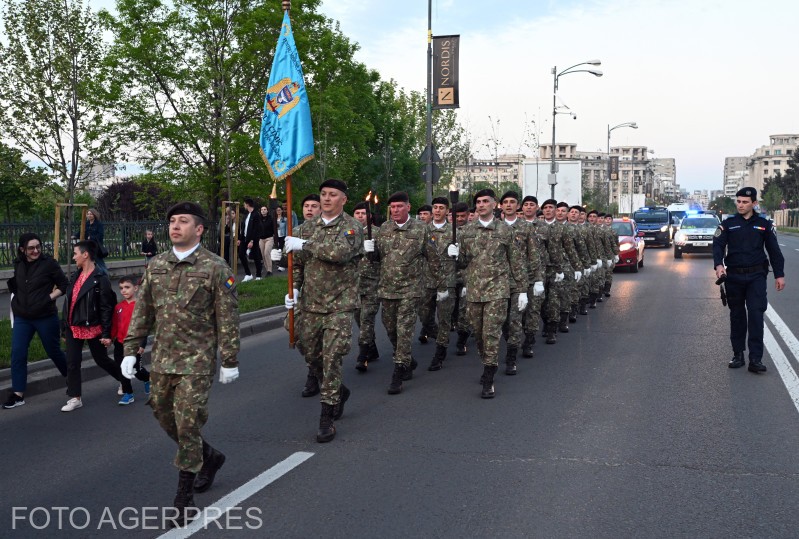Recourse to History: The Day of Romanian Army

H.E. Ion JINGA, Ambassador Extraordinary and Plenipotentiary, Permanent Representative Council of Europe
Motto: "Those who cannot remember the past are condemned to repeat it”. – George Santayana (Spanish-American philosopher, "The Life of Reason”, 1905)
In the tragic summer of 1940, Europe was ravaged by war. With France capitulated and Great Britain under the Luftwaffe siege, following Dunkirk evacuation, Romania found itself Internationally isolated, as France and UK were its main allies in the inter-war period.
On 26-27 June, the Romanian government was forced to accept Soviet ultimatums and allowed Moscow to invade Bessarabia and Northern Bukovina, two historical Romanian provinces which rejoined the Kingdom of Romania after WW1 in application of the principle of self-determination proclaimed on 11 February 1918 by the US President Woodrow Wilson ("National aspirations must be respected; people may now be dominated and governed only by their own consent. Self-determination is not a mere phrase; it is an imperative principle of action.”).
Miklós Horthy, the Regent of Hungary, saw the opportunity and asked his friends Benito Mussolini and Adolf Hitler to put pressure on Romania to give up Transylvania. His alliance with Nazi Germany had previously made possible other territorial gains - Southern Czechoslovakia in 1938, and Subcarpathia in 1939. Foreign Ministers Joachim von Ribbentrop of Germany and Galeazzo Ciano of Italy met on 30 August 1940 at the Belvedere Palace in Vienna and simply produced a map detailing what the settlement was to be: North-West Transylvania, a land of 43,492 km², was given to Hungary. When he saw the map, the Romanian Foreign Minister Mihail Manoilescu collapsed and had to be revived.
According to the census of 1930, the total population in North-West Transylvania was 2,393,300: Romanians - 1,176,900 (50%); Hungarians - 912,500 (38%); Germans - 68,300; Jewish - 138,800 (one year after the Vienna Diktat, the Jewish population was only 47,400); other - 96,800. These figures are confirmed by the Hungarian historian Árpád E. Varga ("Hungarians in Transylvania between 1870 and 1995”, Teleki Laszlo Foundation, 1999): "The census conducted in 1930 met international statistical requirements in every respect. In order to establish nationality, the compilers devised a complex criterion system, unique at the time, which covered citizenship, nationality, native language and religion".
To retake Bessarabia and Northern Bukovina, on 22 June 1941 Romania entered the war against the Soviet Union. Three years later, on 23 August 1944, King Michael put Romania's military capabilities on the Allied side and the Romanian Army ended the war fighting hard to liberate North-West Transylvania, and significantly contributing to the liberation of Hungary, Yugoslavia, Austria and Czechoslovakia. On 25 October 1944, the town of Carei, the last furrow of Romanian land in North-West Transylvania, was freed from foreign occupation.
Until the Victory Day in Europe, some 538,500 Romanian soldiers fought against the Axis, 167,000 of them being killed, wounded or went missing, a contribution ranking Romania fourth behind the USSR, USA and Great Britain in the victory against fascism. In 1959, a year after the Soviet troops left Romania, 25 October became the Day of Romanian Army.
I had the immense privilege to listen King Michael talking about those crucial moments he personally witnessed, when I met His Majesty, sometimes in tête-à-tête, in Brussels and London. I also learnt fascinating stories while talking to Ivor Porter, a British diplomat and SOE operative parachuted in Romania during WW2; in 2008, alongside Jonathan Eyal, director at the Royal United Services Institute, we received from The King’s hand "The Cross of Romania’s Royal Household”.
I always agreed with George Santayana’s aphorism. In the current international context, when Russia’s aggression against Ukraine brought again the clouds of war at the gates of Europe, as a stark reminder of the famous adage of the Roman author Publius Flavius Vegetius Renatus, "Si Vis Pacem, Para Bellum” ("If You Want Peace, Prepare for War”), learning history may once more help avoiding the repetition of dark episodes from the past and a better understanding of the present, in anticipation of the future.
In 1940, the great historian Nicolae Iorga said that Romanians are "a nation abandoned at the crossroad of storms that blow here forever and ever, and will always blow in these places of tempting abundance and of armies’ passage”. Today we are no longer a nation isolated at the crossroad of storms. Romania is now a member of the European Union and NATO, a security provider in its region and a strategic partner of the United States of America, with its armed forces protecting the realm at the highest NATO professional standards.
And, since 1991, confirming the country’s firm commitment to peace, justice and development, over 12,500 Romanian military, police, gendarmerie and close protection teams also served under the United Nations blue flag in 25 peacekeeping missions all over the world, thus giving a new form to the old Latin adage mentioned before: "Si Vis Pacem, Para Pacem” ("If You Want Peace, Prepare for Peace”).
Note: The opinions expressed in this article do not bind the official position of the author.
Comentarii